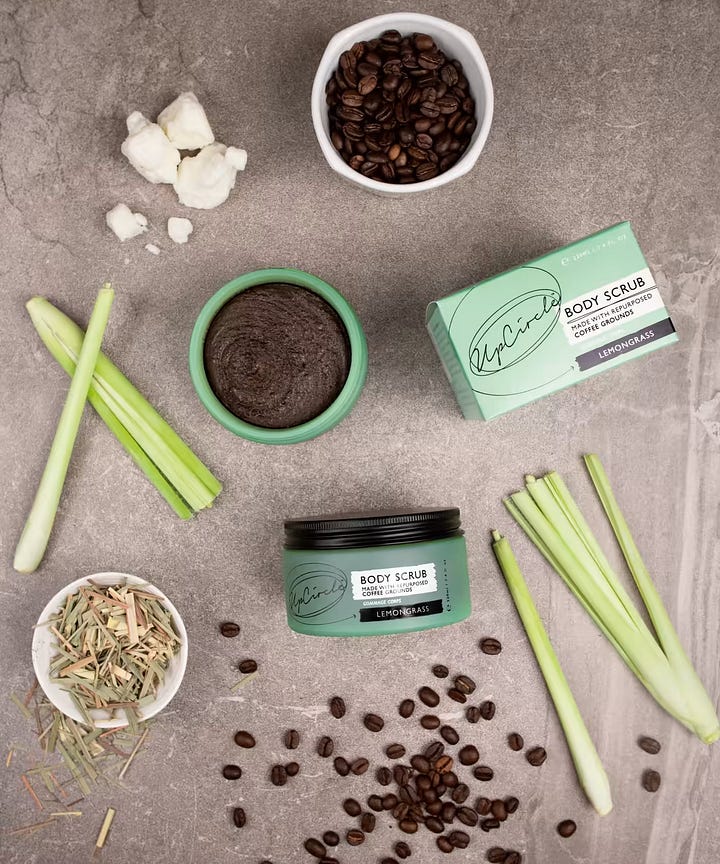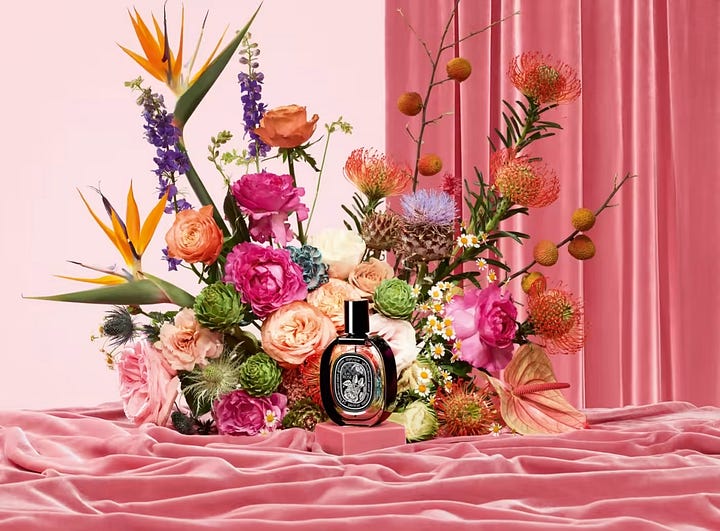In order to fly you need to give up the ground you are standing on. - Elie Wiesel
Dear friend,
Today marks a new day for The Mettā View as you can probably tell, since I’ve migrated platforms from Mailchimp to Substack. There’s nothing like the start of a new year to explore and extend ourselves, reminded afresh perhaps of the objectives we have in mind, for the calendar year, or beyond. While the format is less glossy, it’s geared towards reading and listening, which is kind of essential for what I do here.
I have some big plans and big projects coming up, not all professional, which I’ll share with you in due time.
But while it’s all cooking away, I want to tell you about some recent developments which occurred since my return from holidays.
If you’re a regular of The Mettā View (or if you’ve checked the website or the blog’s archive), you know that I enjoy reading extensively on topics, and then sharing what I’ve found most arresting (or inspiring). After years of back-to-back meetings, this process is very enriching for me, and I think it adds a certain edge to my practice as a coach and consultant.
But then you read something powerful, and you can’t unread it.
FOR THE LOVE OF SHOES
There was this article. I read it, wrote about it, and then it’s not like I couldn’t stop thinking about it, no. But the information it contained stayed with me, percolating and maturing at the back of my mind. Until such time that it came into my consciousness, and I realised I had a problem. And I want to talk about it. Or write about it.
The article was this one, by Lauren Indvik, fashion editor at the Financial Times. It linked to a report by Berlin-based consulting firm Hot or Cool called ‘Unfit, unfair and unfashionable’ and to sum it up, here’s what it said:
In order to address and hope to reverse the environmental catastrophe likely to unfold, the richest 20 per cent, who have the biggest fashion footprint, need to reduce their fashion purchases, if we want to stand a chance to keep global temperatures from rising more than 1.5 degrees Celsius above current levels. Should we keep on going as we have, the fashion sector is forecasted to double its emissions of climate-damaging gases by 2030 (UNEP, 2019 - from the report).
Whether we’re talking fast fashion or luxury, whether you think it concerns you or not, that’s okay. Just take a peak at these findings from the report:
Fashion consumption is highly unequal between and within countries.
While the richest 20% in the UK emit 83% above the 1.5-target, 74% of people in Indonesia live below sufficiency consumption levels of fashion
Between countries:
Average carbon footprints from fashion consumption among 14 of the G20 countries exceed the limit of emissions set by the 1.5-degree aspirational target of the Paris Agreement.
Fashion footprints need to be reduced by 60% on average by 2030 among G20 high-income countries (Australia, Canada, France, Germany, Italy, Japan, Saudi Arabia, South Korea, the UK, and the US)
Upper-middle-income countries (Argentina, Brazil, China, Mexico, Russia, South Africa, and Turkey) need to reduce their footprints by over 40% by 2030. While these countries are, on average, overshooting the environmental ceiling, a significant share of their population remains below sufficiency.
In lower-middle-income countries (India and Indonesia), the average carbon footprint of fashion consumption is below the 1.5-degree limit
Within countries:
A representative sampling of G20 countries shows that the lowest income quintile is responsible for 6%-11% of the national carbon footprint, the second quintile for 10%-13%, the third quintile for about 17%, the fourth quintile for 24%-26%, and the highest income quintile for 36%-42%.
The richest 20% need to reduce their footprint of fashion consumption by 83% in the UK, 75% in Italy and Germany, and 50% in France.
On average, the fashion consumption of the richest 20% causes 20 times higher emissions than that of the poorest 20%. This ratio varies substantially across countries, following levels of income inequality.
What does that mean, practically?
According to one of the authors of the study, the wealthiest 20 per cent of Brits buy on average 50 new pieces of clothing or accessories each year, the number being far higher in the US and Australia. That same report declares that consumers need to drop their shopping habits to a mere eight or nine pieces per year (or five, there were discrepancies between the report and the FT article).
I’ll quote the report one last time, as it concludes that:
‘Reducing purchases of new clothes is the most effective action to reduce the carbon footprint of fashion consumption, leading to reductions 4 times higher than the next best solution (increasing the use time of garments) and over 3 times higher than what is considered achievable through the current pace of decarbonisation of the fashion industry).
So things need to change. We (I can tell I’m in that richest 20% group) need to change our buying habits and it’s not going to be easy.
I don’t know how much you like shoes, but I do. A lot. As proven by my recent double purchase of super cool and sexy suede boots (on sale, back in December 2022, it doesn’t count towards this year's maximum number of garments).
Last year was already a massive failure for me because I turned into a dog-mom shopper, which I really hadn’t planned on becoming. With the puppy growing as he is with his bum hanging out from under his orange raincoat, more puppy clothes are likely to make it to my house. I’ll donate and/or share with neighbours, to try and limit the damage. Aie aie aie… (writing this actually triggered a sale shopping alert in my mind. Talk about Pavlov’s reflex!)
WHAT’S THE FUTURE OF LUXURY FASHION?
It’s not simply a crisis of conscience that I am facing as a consumer.
Dropping from whatever is my average (I did not try to calculate it) to nine purchases per year is something I can probably do. After all, I lived in Paris for two years as a gluten-free person and managed not to devour a single baguette… Does vintage count, if shopped locally (not shipped around the world)?
No, the real problem is: what does that mean for my work?
I’ve spent my career either selling, wholesaling, PR-ing or helping others sell, wholesale and PR, creating fun and clever campaigns to flood the world with red-soled shoes. Later on, I turned to apparel, fine jewellery etc. Less flooding, but the motivations were essentially the same. Sell, sell, sell. More, more, more. Anne, help us figure out how to do that!
Actually, I can’t do that anymore.
I can’t because the old (or call it current) fashion business model doesn’t serve our environment, it doesn’t serve our planet, and well, it won’t serve us, either. Unless you’re planning an escape to Mars, or the moon, and have built a rocket ship or two, we kind of need to figure out how to make things less terrible down here, for as many people as possible.
My industry’s model is based on growth for the sake of growth, which has no purpose other than to create larger and larger companies, with more and more outlets, fans, followers, and sales. Of course, it does more than enrich owners and shareholders. It supports millions and millions of people, all down the production chain. While most fashion and luxury brands don’t do much for the environment, they support the livelihood of families, keeping craftsmen in work, supporting communities and culture in their own way.
It all comes down to this:
How we behave tomorrow will have an impact on the kind of world we will live in by 2025, or 2030 and beyond.
I don’t want to pretend that it’s business as usual.
And this is really scary because I’ve built a career in this industry and I respect and love the people who work in it, from the designers to the salespeople to the factory workers.
The intention, and the objectives, need to change, right at the top, when executives, CEOs and consultants sit and review their five-year plans. We need to make the new business model sustainable beyond the next couple of years.
But the intention can also change at the consumer level. If we stop to purchase as we have in the past 10 or 20 years, then the industry will be forced to respond. I’m not loving this idea because the impact will be redundancies and closures. That’s why I’d like to see the business of fashion’s suited and booted executives take the bull by the horn, and start to create change themselves.
Changing the fashion business model means creating huge ripples, the effects of which will be felt across countries and cultures. I don’t have a perfect solution, but I think we should talk about this and do it now. Because I don’t believe that anyone has it perfectly figured out. Isn’t it better to work on this early and create slow, and effective change by managing the challenges, rather than be faced with the reckoning scientists have been predicting for decades?
I don’t believe that we can let ourselves ignore this.
And ‘degrowth’ is something that the fashion industry needs to reckon with if they want to support a better future.
I am thankful that my current clients are not in the business of mass production. In a prior consciousness-inducing pivot, I had already decided a while back to only support companies that have a strong sustainable and ethical stance.
But I’m worried. It’s actually much more than a crisis of conscience. It’s deeper, triggering my survival instinct’s ‘on’ switch, my parasympathetic nervous system fully activated. I can sort of feel that low-level buzz.
This morning, I read the latest offering from Maria Popova’s famed newsletter, the Marginalian (previously known as Brain Pickings), where she explores Nobel prize laureate Elie Wiesel’s suggestions to face the world-overwhelm. She shares:
“The antidote to [...] paralysis, Wiesel argues, is small action — a testament to Hannah Arendt’s conviction that ‘the smallest act in the most limited circumstances bears the seed of… boundlessness, because one deed, and sometimes one word, suffices to change every constellation.’”
Further below, I found this other quote from Wiesel:
“I believe in dialogue. I believe if people talk, and they talk sincerely, with the same respect that one owes to a close friend or to God, something will come out of that, something good.”
He also is known to have said:
‘To remain silent and indifferent is the greatest sin of all.’
Many of us will (or already have) experienced the discomfort of not being aligned with our values and we can either bottle it up, stay silent and stick our head in the sand; or we can talk about what’s going on and try to find solutions. Together.
Like Mr Weisel, I believe in dialogue. And I think we need to talk. Now.
(I still believe we need a new word to engage in difficult conversation without triggering each other and creating traumatic ripple effects, but that’s something we can come back to another day.)
As always, thank you for reading me. Drop me a line if you want to share your thoughts; I love to hear from you.
Have a good one,
Much love,
Anne
(PS. Mini digest this week as I fiddle with the platform and import the archives of the blog & podcast. More next week)
Looking Out


THE BEAUTY BRANDS UPCYCLING FOOD
What’s not to love: beauty brands are dipping into food waste to create effective products. Apparently, there is a type of consumer called “protopian,” ‘buyers who believe that “small actions change the world” and are looking to brands for assistance.’ I’m certainly one of those protopians and according to this article, a quarter of us are actively looking for brands that have an impact on waste. Join the club and read more here.
Looking In
MY CONVERSATION WITH THE YOGA TEACHER’S TEACHER
When I was 17, I dropped classical piano. I’d been playing for ten years, and I was so in love with music, as romantic teenagers can be prone to become. It was just my luck that I’d been paired, a real gift, with a concert pianist teacher of Greek origin named Pippiza for eight out of those 10 years. But eventually she decided to leave Geneva to live on a Greek island (I can’t blame her, wise choice) and I found myself in front of a wretched old broad at the Conservatory of Music who sapped my energy and robbed me of the flame I’d had so much she disliked the technique I’d been taught by my former tutor.
When we find a good teacher, or a great one, we often reach far higher goals than imagined. So I’m incredibly happy to be sharing with you my latest interview for Out of the Clouds with a master yoga teacher called Annie Carpenter.
Annie first came onto my radar in 2019, while I was training to get my first certification, and I’ve been following her ever since. She is powerful, subtle, and her practice is often strong, with a keen focus on alignment. And she is quite magic, as great teachers are. She loves a good metaphor, whether related to her love of birds or other, and the former dancer with the Martha Graham Company loves to pepper her practices with Feldenkrais, Alexander Technique and other somatic movement explorations that mean that her students will often find themselves in a curious state of exploration. A happy place to be in my eyes, away from the screens and into a state of play.
Annie loves to ask questions so much that I came to wonder whether she was a trained coach. She explains in our conversation that it’s a deliberate method she uses to empower her students. In long asana holds, like a warrior one or two, her voice will boom: Can you do this? And can you feel …? And can you push into…? And then she modulates down, the inquiry becoming intimate: ‘And while you remember all that, can you feel…?’
And while I suffer, my bent knee occasionally wobbling, I find myself exploring these suggestions, my mind curious in following her cues: ‘Can I…?’ Sometimes I can, sometimes I can’t. The exploration of what’s possible is what led her to create her own curriculum, movement principles that are behind her yoga school, Smart Flow Yoga.
Last year, I completed an assignment for the master yogini after an in-person training with her at Yoga Kula in Vienna (which inspired this post). The last of the three questions poised was ‘who am I?’
I got to turn the tables on her and get her answer. It's both powerful and delicate: a must listen.
All in all, a joyful, profound and inspiring conversation. Happy listening! 🎧







Absolutely loved this post - it's a clarion call to us all to consume less. Fascinated by the concept of degrowth and wondering if we - as a society - can make this a reality.